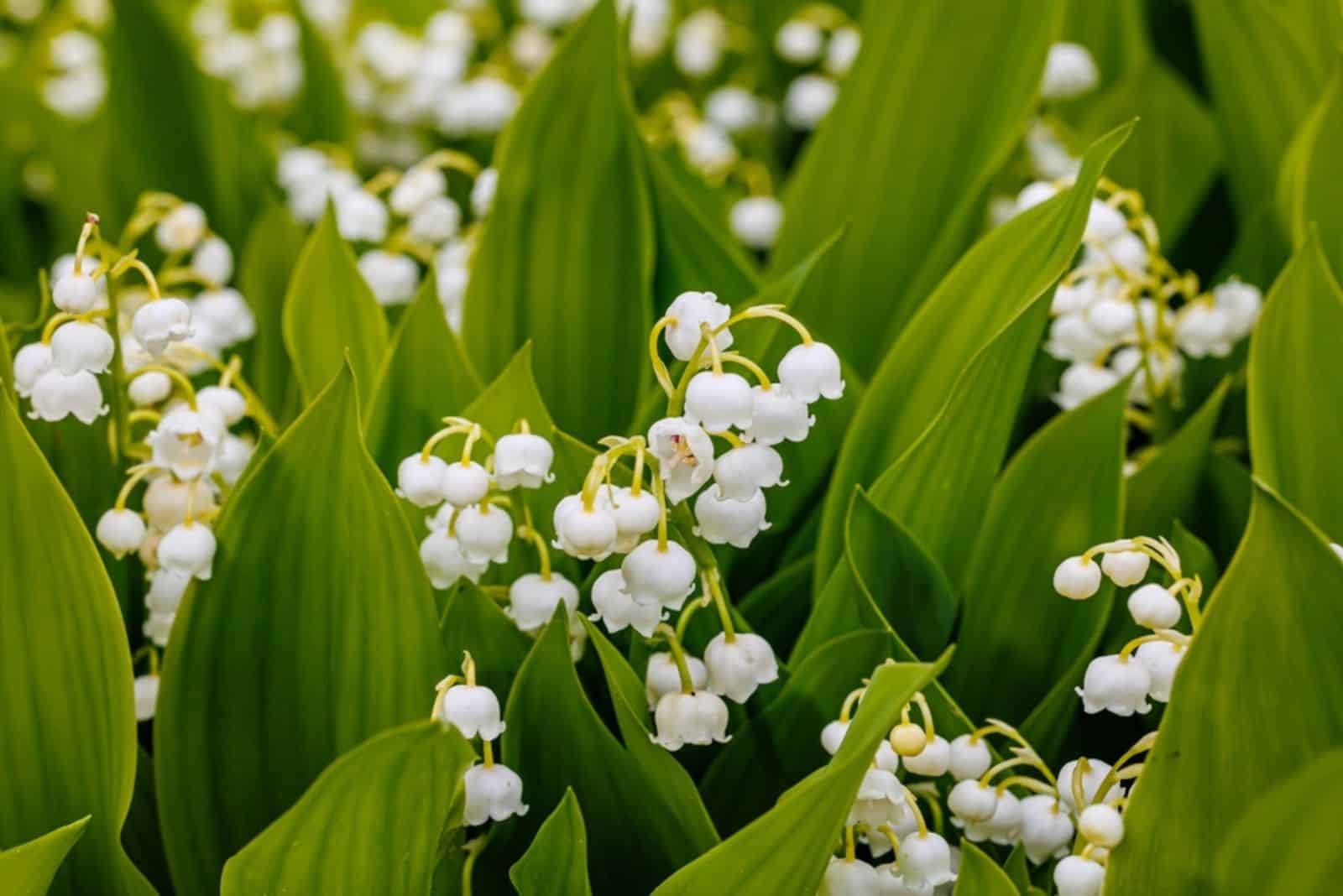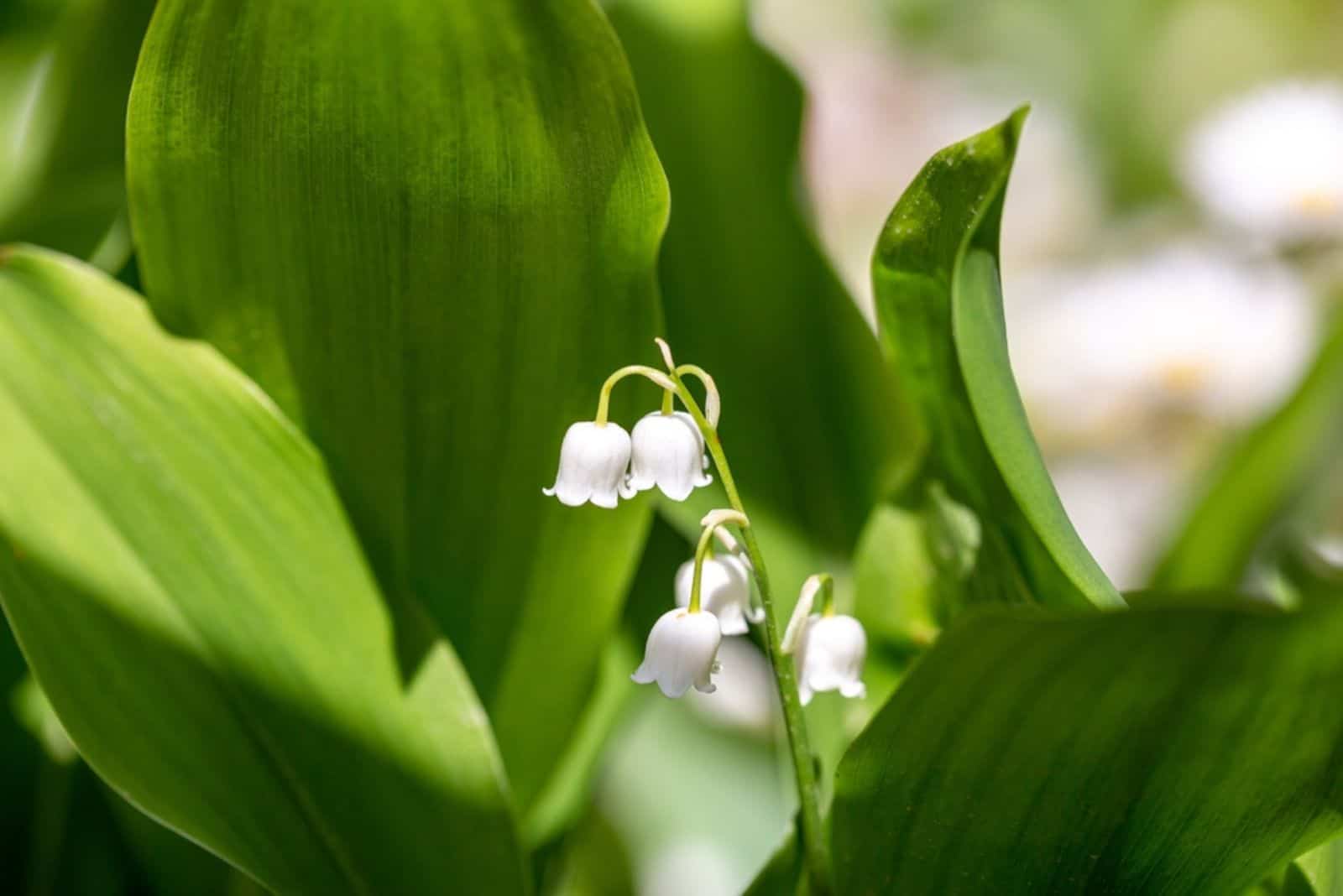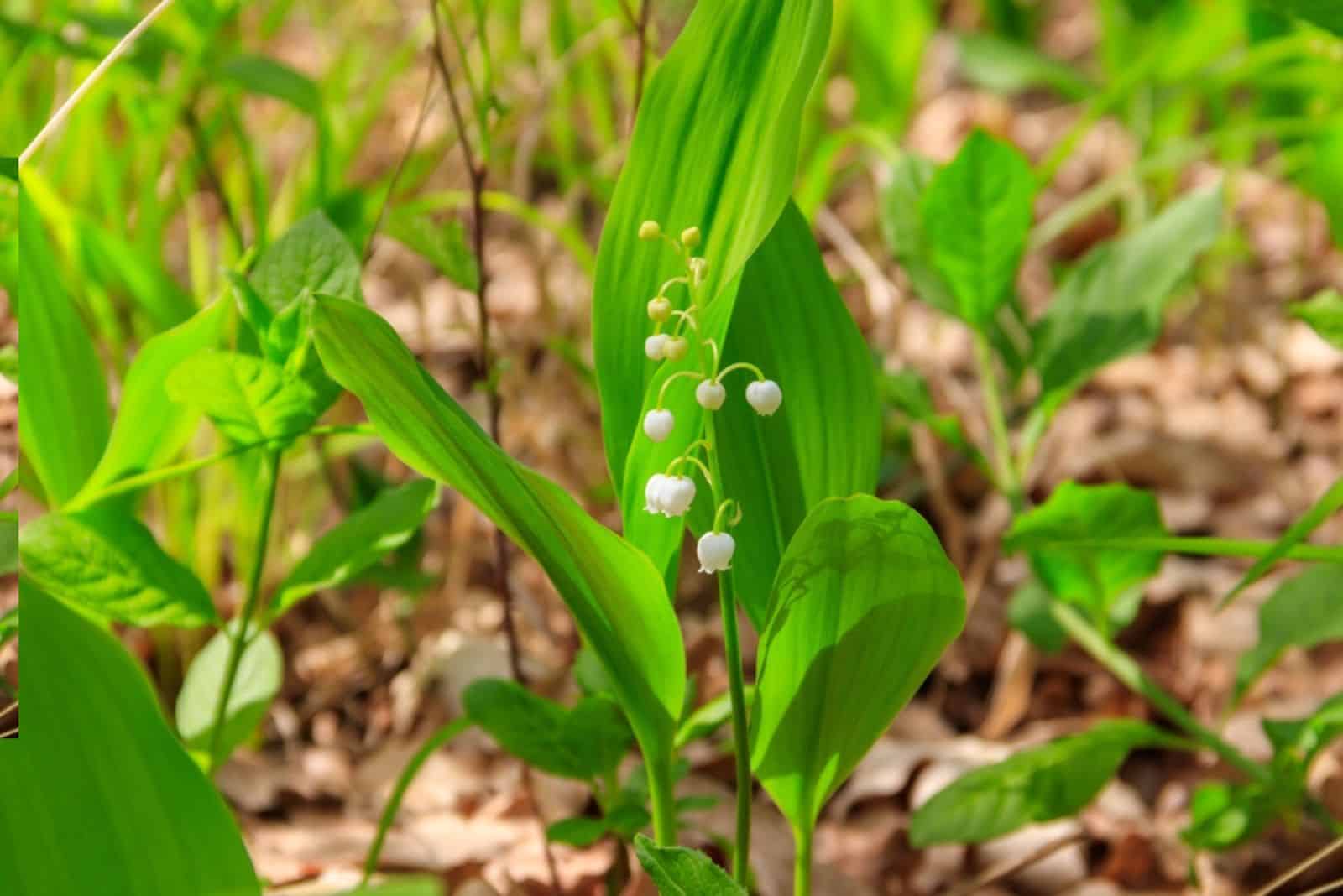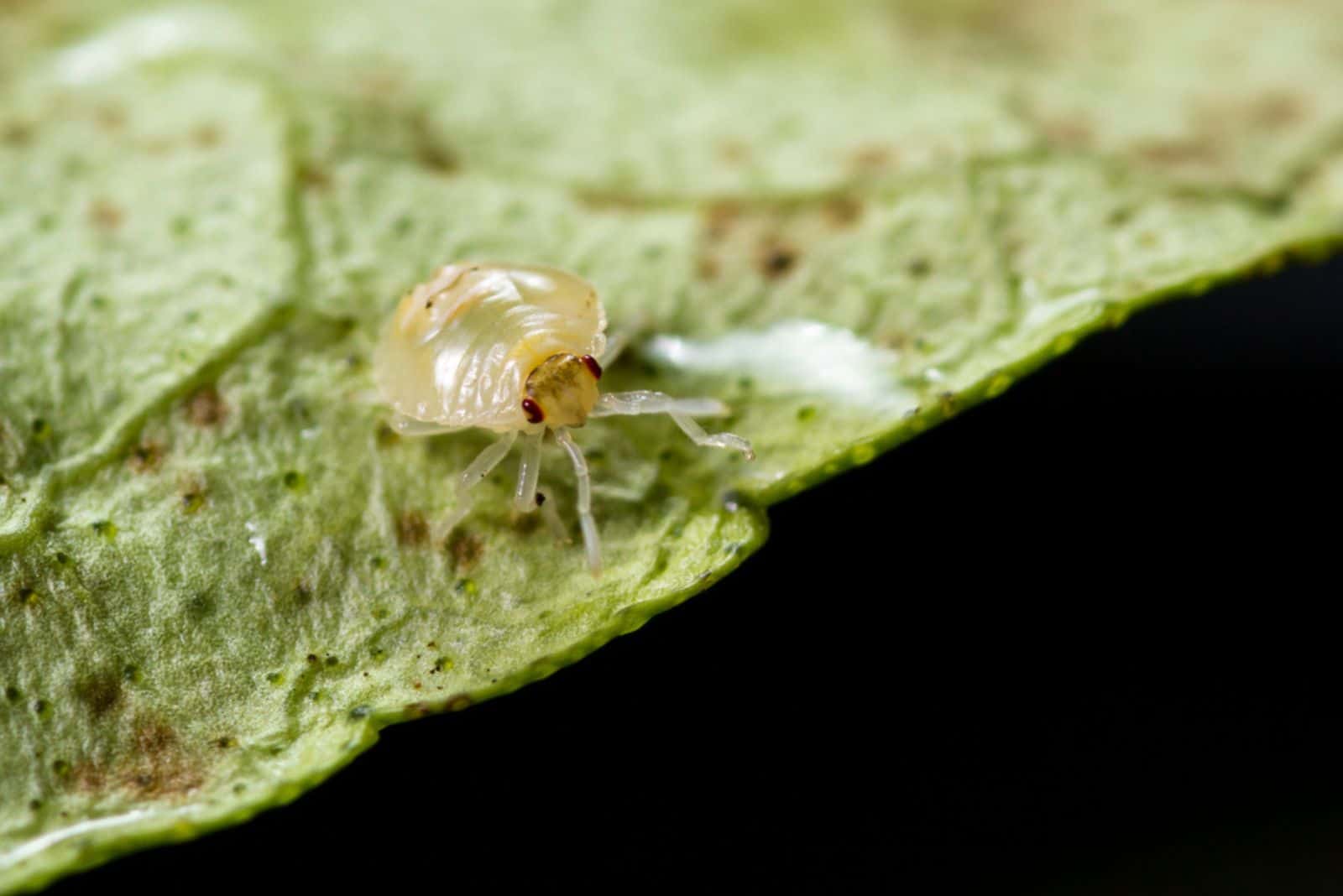Lily of the Valley, also known as the Convallaria majalis, is a delicate plant that will make your garden look like a fairy tale.
The white bell-shaped flowers emit a mesmerizing fragrance that will capture your senses, while the glossy dark green leaves create a perfect backdrop. This lovely plant is a great addition to any garden and requires minimal care.
Keep reading to find out more about Lily of the Valley!
Plant Description
Lily of the Valley is a charming perennial plant native to Europe and widely cultivated in gardens around the world. This flowering plant produces white bell-shaped flowers that hang on short stalks.
Not only are these flowers absolutely beautiful, but they also smell amazing. Glossy green leaves form a dense groundcover and make the plant look even more alluring.
What’s also interesting about this plant is that it can be forced to bloom any time of the year. It can be grown in the garden or as an indoor plant.
There is also a special symbolism behind the name – it’s thought that the tears Mary Magdalen wept while embalming Christ flowed to the valley and came to life as lilies.
I must mention that, after they bloom, these plants produce tiny red berries that are extremely poisonous. Don’t try to eat them or any part of the plant whatsoever because it might lead to cardiac distress or even death.
Compounds found in the plant might also have therapeutic uses. Convallatoxin is one such substance that can be utilized to treat specific heart issues. The majority of convallatoxin used in medicine is manufactured in a lab, not extracted from plants [1].
How To Plant Lily Of The Valley
To grow your own Lily of the Valley, you will have to get some tubers first. Make sure that the roots are fresh before planting, and that it contains a pip or pointed bulb.
If you get a hold of the flower seeds, you can plant them as well. However, these flowers are usually propagated by root division.
First of all, you should fInd a perfect location for your new flowering plant. The Convallaria majalis is a perennial that loves shade, so it can grow perfectly fine in partial to full shade.
Make sure to plant the rhizomes in fall, before the ground freezes. Plant the pip about 1.5 inches deep in the soil. You should also spread the roots around the pip, cover them with soil, and water thoroughly.
Remember to wear gloves when touching the plant, otherwise you might end up with skin irritations.
How To Grow Lily Of The Valley
It is quite easy to grow and take care of this lovely, but deadly plant. Lily of the Valley can be grown in USDA hardiness zones 2 through 9. This plant prefers to grow in well-draining and evenly moist soil.
As previously mentioned, this plant can grow fine in partial to full shade. If you grow it indoors, place it somewhere with enough bright indirect sunlight.
However, the plant can be adapted to grow in full sun as well – it all depends on the amount of moisture it receives.
Lily of the valley should be watered once the top few inches of the soil have dried out. Try to do it in the morning so that the water can evaporate during the day. Avoid getting water on the flowers and leaves.
Add some compost in the spring when new growth appears. You should also mulch the plant with aged manure or compost in the late fall.
How To Force Lily Of The Valley
Since these pretty white flowers are often used in bouquets, many professional nurseries have mastered forcing Lily of the Valley at any time of year. Buy plants in October, or remove one from your garden (it must be 2-3 years old).
Don’t let the leaves dry out after purchasing a Lily of the Valley; immediately plant them in the ground. You should use pots with proper drainage. The roots should be trimmed and planted in soil mixed with sand.
Planters should be buried in the ground and covered with moss or sand. Water them thoroughly.
Bring the flowers for forcing indoors in December or even later. At about 85 degrees Fahrenheit, give them a warm water treatment. Keep the pots in a dark and humid location with temperatures around 77 degrees Fahrenheit.
The temperature can be progressively dropped to around 66 degrees Fahrenheit once the stems have grown to a length of about four inches, at which point the plants can be gradually exposed to light. It takes roughly four to five weeks to force blooms.
Common Issues With Lily Of The Valley
Even though they are relatively easy to grow, there are some issues you might encounter with Lily of the Valley. The first issue might be overcrowding since these plants can spread quickly and form dense clumps, which leads to poor air circulation and plant diseases.
If you don’t provide your plant with adequate drainage, this might lead to overwatering and root rot.
Our next stop is pests. Critters like aphids and spider mites love munching on these lovely plants, even though it is poisonous. These pests can cause damage to the leaves and flowers, and also spread diseases.
The most common issues with Lily of the Valley are definitely fungal infections. If you see any gray or brown spots on the leaves, then you are probably dealing with fungi.
Botrytis blight and leaf spot are fungal diseases that can affect Lily of the Valley. These diseases can cause brown spots on the leaves and flowers, and eventually cause the plant to die.
I hope this article was helpful.
Until next time!
References1. Vallie S. (2022). Lily of the Valley Poisoning. WebMD




